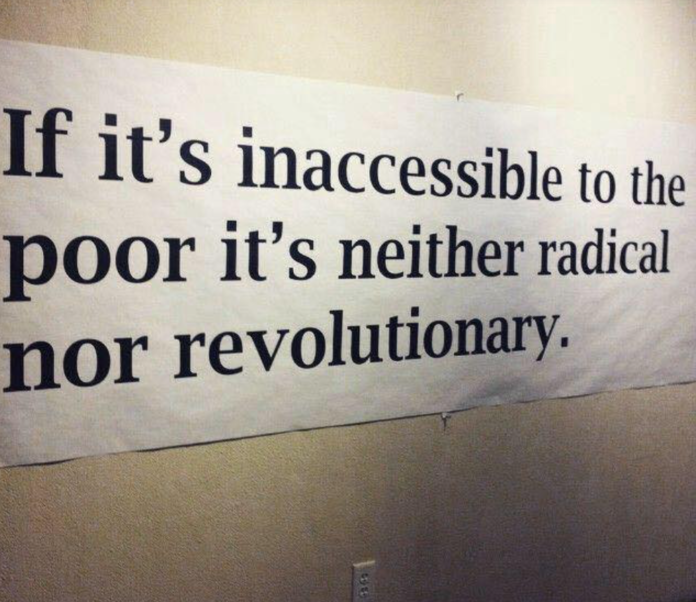A hundred or so years ago the discovery of gold somewhere in the ‘new’ world triggered a new disease of the mind. Thousands of men (and some women) left where ever they were and raced off to join in a frantic search for gold. The gold seekers often risked everything – including their lives in the search for gold. Over the 19th Century major gold rushes took place across the world in Australia, Brazil, Canada, New Zealand, South Africa, and the United States. In each place, the gold frenzy lasted a few years or maybe more and then faded away. Once the gold ran out or better prospects were found elsewhere, the settlements or towns built for the gold miners were abandoned, leaving little to show for the wealth that had been found in that location.
The state of mind that drove the gold rush was called gold fever. Aptly named, the main symptom seemed to be lack of reason or, at least, a rational ability to assess risk. While the economics of supply and demand could explain, at least in part, the price of gold, economics do not explain a gold rush. The madness of crowds, the spell of tulip bulbs, is also part of the story. It is madness, reminiscent of gold fever, which also fuels the current housing crisis and helps explain why increasing supply won’t end the crisis.
Usually the housing crisis is defined in terms of supply and demand; too little housing and too many people wanting to buy. While there may be a short fall in the overall numbers of houses, many New Zealanders own two or more dwellings. Some are holiday homes and others are rentals bought to ensure retirement income. The kind of house and where it is located are key indicators of social identity and status. Housing is perhaps the clearest indicator of wealth – the line between the rich and the poor. The rich have good housing, while the poor struggle to find a place to live. So the housing crisis can also be defined in terms of equality. As the price of houses have risen over the past few decades, as an increasing number of New Zealanders have realized that they cannot afford to buy a house, more also have also accepted that they will never be financially secure. The fear of missing out is for a house and a community in which one belonged by right of ownership.
So no surprise that the current housing crisis is also a political issue. The major parties acknowledge the need to do something but it is unclear as to what they believe is needed besides building more houses. Labour is credited with the historic provision of social housing, but both National and Labour were heavily involved in running the economy, including the housing market, until the late 1980’s. In the 1990’s New Zealand embraced neo liberalism, with privatization, free trade and globalization, but with seemingly little immediate effect on housing. The 1990’s and 2000’s saw, however, constantly and often rapidly rising house prices. Following their election in 2008, National continued with reliance on the market and the private sector to provide housing. Houses were built, but not at the rate needed to cope with increasing demand, especially for affordable housing. After the global economic crisis house prices continued to rise and while increasingly unaffordable for those seeking to enter the market, those who already owned one or more houses were feeling better off. With the election of a Labour government in 2017, the market approach was replaced by a government driven process. Still, the rate of building did not increase to a rate necessary to meet demand. In their second term, despite supply chain issues caused by the pandemic, Labour again committed itself to increasing the rate of house building. Despite the prediction that the pandemic would cause prices to fall especially given the suspension of immigration, prices rose even more rapidly. And the numbers of those seeking housing seemed to grow even more. National, now in opposition, accepted that government had a role in providing housing and argued that Labour’s failure to build more houses was due to incompetence. For observers, it was unclear that National likely would have had much more success in building houses. Regardless, the political consensus seemed to be that the housing crisis was one of supply and would be resolved once there were enough houses to meet demand.
From the perspective of the home buyer, the housing crisis is a problem of supply. From 2003 to 2020 New Zealand’s population grew from 4 million to 5 million people. With such an increase in population, pressures on housing were to be expected. The question becomes why didn’t housing construction increase to meet the demand? There is a lot of controversy and unanswered questions regarding what is seen as a supply side failure. The high costs of construction and the slow pace of building in New Zealand are well reported. Some argue that the construction industry as a whole failed and needs reform. The lack of competition, supply chain issues, and inefficient building methods were all seen as part of the problem. New Zealand’s distance from major markets and small size makes construction materials more expensive, but wood, which New Zealand produces, is also expensive. And then there is ‘red tape’. Developers have long complained that regulations, in particular those of the Resource Management Act (the RMA) drive up costs and cause lengthy delays. Environmentalists reply that the regulations including those under the RMA are intended to protect the environment and delay is often necessary to ensure appropriate and sustainable development. Also the experience of de-regulation in the 1990’s which contributed to a massively expensive leaky homes debacle still haunts the housing sector. Yet others blame disruptions caused by the Christchurch and Kaikoura earthquakes. And then there are the questions surrounding the collapse of several large construction companies – what went wrong there? There are also questions about a skills shortage – from engineers and building estimators to tradespeople – many argue that there are not enough skilled people available to do the work. New Zealand’s continued reliance on skilled immigrants, some argue, reflect the lack of investment in education and training locally.
The supply of houses is clearly a problem, but a focus on supply ignores questions about the demand, in particular the question as to whether it is possible to meet the demand. New Zealand housing crisis is part of a global phenomenon. There is a global demand for investment opportunities and houses are good investments. Locally the family home has long been recognized as an important asset. Buying a house was often the biggest and most important investment an ordinary person would make in their lifetime. Up until the 1990’s the expectation was that young people seeking ‘to settle down and have a family’ would buy a house based on their future earnings. They would get a mortgage payable over 25 to 30 years secured by whatever equity they had in the house and based on their earning capacity. Banks were keen to lend money but there were limits and in particular the amount which could be borrowed was determined by the purchaser’s income. An affordable house was one where the price was around three times the annual income of the purchaser. The expectation that the house would be paid for by the time the purchasers retired and they could then live out their years debt free.
In the 1990’s this link between local wages and house prices was strained as the average price of houses rose above the three times average income. Even two income households were being priced out of the market. Affordability became an issue as fewer and fewer houses met the criteria as determined by local wages. Locals, who were not already ‘on the property ladder’, found it increasingly difficult, if not impossible, to borrow enough money to buy a house. And demand was not tempered by increasing prices. The questions became: Who was buying? Who could afford to pay the prices being asked?
Location location location. Apparently that is the answer real estate agents offer to any question about housing and demand. At one level this suggests that the desirability of a house as a place to live (i.e. the number of bedrooms etc) is less important that where the house is located (i.e. proximity to good schools and transportation etc). But this also refers to the city and the country in which the house is found. Countries with stable governments, reliable legal systems, good schools and hospitals and so on are better places to buy if one is looking for a safe place to live and to invest. William E. Rees in his 1998 essay, “Why the Housing Crisis is Really About Globalization”, writes:
The rise to dominance of industrial capitalism in the 19th century had the effect of separating domestic economies and governance from the communities they had evolved to serve. People no longer live in economies that reflect local conditions and serve basic needs, but must now adapt their lives and communities to global economic realities and the rule of capital. With globalization, workers in Canada and other “advanced” economies have had to compete with impoverished foreign workers for their jobs; they are now being forced to compete with wealthy foreign elites for their housing. The evolving global equilibrium is further bad news for average Canadians. … For one thing, it implies that external demand is likely to keep up with any reasonable increase in local supply.
As the pandemic revealed, it is not just ‘foreigners’ who have contribute to the globalized demand, as expat Kiwis returning home with their savings were willing and able to pay a global price for a house. The issue is that once demand moves beyond the local, the affordability worsens.
Increasing the supply of housing obviously meets the need for residents to have a place to live. The problem is that while there may be a finite demand for places to live, there may be no limit for the need for profitable investments. The two are linked as a profitable investment is likely to be a good place to live; though it is not clear that the reverse is true – that a good investment is always a good place to live. Do the qualities which make the house a home matter for the investor? In a rising housing market do good neighbours or even tenants matter when the point is capital gain? The other, and perhaps more serious problem with allowing housing to be dealt with as any other kind of capital investment, is related to irrational demand. At what point is the demand for housing infected by gold fever. Over the past twenty years, the housing markets in some major cities have been labelled as bubbles from time to time with seemingly little long term effect on prices. Astoundingly higher and higher prices are justified each year the market keeps on going up. Gold fever as much as a need for a place to live is fuelling the market. And this means that the supply side drive is not simply about homing more people, it is about continuing the gold rush.
The solution to the housing crisis, begins with seeing the crisis as a problem of local supply and global demand. If the underlying problem is rooted in the globalization of demand, increasing supply will not solve the problem. Measures such as improving locals’ ability to compete by offering grants and loans and by restricting non-residents ability to invest in housing help them compete with global investors, but the solution requires measures which removes the gold found in local housing. This demand must be quelled. The solution requires more than limiting immigration, more than capital gains tax, allowing housing on farmland and so on. It requires extracting New Zealand housing from the global economy of desire.
Most countries have their own rules and customs which shape their housing. Property laws differ a lot from place to place. Some states value sovereign control of land and prohibit foreign ownership. Others may restrict the buying and selling of housing in other ways. In Australia and New Zealand non-residents were limited to buying newly built houses. Apparently in Sweden regulations prohibit most people from making a profit on the sale of housing and limit the use of housing for rental income. In Canada any profit on the sale of a house, other than the family home, is subject to capital gains or income tax. In some Canadian provinces other measures such as an empty home tax and speculation tax have also been introduced to discourage non-resident investment in housing. And while these taxes reportedly raise a significant amount of money, house prices continue to rise.
The gold rush ends when the gold runs out. To break the housing fever, it is necessary to limit the profit found in housing. Somehow people need to be convinced that the idea that the family home is also a gold mine is delusional. Locals who wish to purchase a place to live, need to understand that there are no guarantees that prices will continue to rise. Speculative booms end when prices stop going up and start going down. No one knows if this will happen to housing market. Still, if global demand was to cease, the current market could collapse and then housing would be revealed for the pyramid scam that some argue it is. The human and financial pain inflicted by a sudden collapse would be considerable. If housing is indeed a bubble, a better solution is to let the air out of it slowly. The government needs to undertake steps it can to end the frenzy if only to protect new buyers from potential disaster if the bubble was to burst. Any measures which limit profiteering should be tried. But if the short term concern is to deal with the housing bubble, the long term solution is to restructure housing.
As the gold is the land, it may be necessary to regulate ownership of land. At first glance, regulating ownership of land in New Zealand seems unthinkable. But ownership is already regulated. There are already many restrictions on land in terms of its use. People may think that owning a house makes them a king or queen in their own castle but that is simply not the case. Prohibiting profit from the sale of land used for housing takes much of the potential for speculation out of the sale. Requiring land used for housing to be held communally and would remove investor flexibility. Another scheme could involve the government at a state or municipal level building housing to meet different needs and income levels, but the houses would be owned by the community and rented to local residents. The rent could be determined on the basis of the income of the tenants, but an important aspect of this state run scheme is that tenants would acquire rights of use depending on the length of tenancy, especially security of tenure, and at retirement age it would be possible to allow the tenant to live rent free – as if they had paid a mortgage. With imagination and commitment, a number of different models of housing can be developed. Housing, bought sold or rented, without the spectre of debt or profit is possible. The gold rush can be ended.
Quick fixes, capital gains or speculation taxes and restrictions on ownership through nationality or residency have not ended the gold rush in places where they have been tried. Extracting housing from the global investment program requires serious commitment to changing the way in which housing is provided to people who simply want a place to live. What is needed are alternative housing models which provide people the security in housing that they seek in home ownership – but without the gold mine. A community riven with income inequality and plagued with homelessness is not what most people want for their home. Playing the game by trying to increase housing supply without changing the model, feeds the fever and is unlikely to end the gold fever.
Nadine McDonnell. I arrived in New Zealand from Vancouver in the 1980’s. Legally trained, I have been an enduring student of politics – and philosophy. Over the years I have come to appreciate the importance of ideas – and the ability to talk about them.






“Quick fixes, capital gains or speculation taxes and restrictions on ownership through nationality or residency have not ended the gold rush in places where they have been tried.” If ownership (and voting) were resticted to cotizens, the markey would crash tomorrow. Those on the ladder reveal their propertied, privileged position by stating that they do not want a crash.
*citizens (i.e. not foreign residents)
I think a rent cap would work if the markets had a reason to have them taken off, say in the event a combination of low cost housing and state homes were built in sufficient numbers to remove rent caps. You’d probably want to walk back LVRs at the same time so renters get affordable rents and speculators can keep there capital gains.
“state homes were built in sufficient numbers to remove rent caps.”
This LINO doesn’t have the guts to get this organised,
The housing problem is proof that the ‘free-market’ theories of capitalism is a failure. Therefore new policies that do not accept these false theories is needed to solve the problem.
I’m sorry but I’ve got to pull you up on a few things I reckon you’re just plain wrong or misleading via omission, though I agree with the gist and nuance of this article.
1) Prices continued to rise under Natz (and maybe Lab) because they PURPOSELY opened up the immigration gates too wide for the ‘housing situation’. That was THEIR fault and thus a Govt made problem. I don’t recall the Shonkey say, p.s. vote for me as I’m going to flood NZ with immigrants to make house prices rise so the poor can NEVER afford to buy. Or similar.
So he LIED, yet again to us, what a traitor !!
2) Prices went up during Covid (so far) because of Kiwis coming home ! and the mania of housing hadn’t ‘popped’. Plus ‘visitors’ in NZ got stuck here. I accept a lot left for ‘home’ but a lot stayed here.
Also infrastructure . health , education have not met the demand of immigration, What is the limit for our population.. I think we are reaching it now…. climate change is not the problem the root cause is population and the inherent demands on resources…..
Agree with you auric but what do we do about the apples (the ones many can’t afford to buy anyway) and fruit rotting? do we just leave it like many of us have been left (behind) or do we turn a blind eye and block our ears so we don’t have to hear or see all the moaning, bitching and crying that we are being constantly bombarded with.
The simplest (and MOST accurate) explanation for house price rises is ‘money printing’.
The world has been printing money out of thin air for the first time in recorded history since August 1971 with basically no limits imposed, other than the ‘con mans’ obvious limits. And when they were challenged to be just a big con, war and decimation was the result, think Sadam, Gaddafi, and to a less extent, Syria, Venezuela, Cuba, Russia, China, North Korea etc.
So when you look at (plot) the supply of money-printing and house prices you’ll see a HUGE correlation around 90% (0.9) which for the statisticians on here, is about when you think someone’s fiddling the numbers, or it is simple CORRECT.
A lot of the other issues you talk about, do indeed affects prices also, BUT the trigger that started it all was MONEY PRINTING, by the uber elites who also get to charge interest. Without that I’m 90% sure we’d not have the problems we have today, bar the odd problems that always occur randomly, and in cycles.
I agree Kevin that injecting billions into the housing market at low interest rates was always going to push prices way higher.
The issue that few commentators address is that there are no other investments available in NZ apart from housing.
Comments are closed.